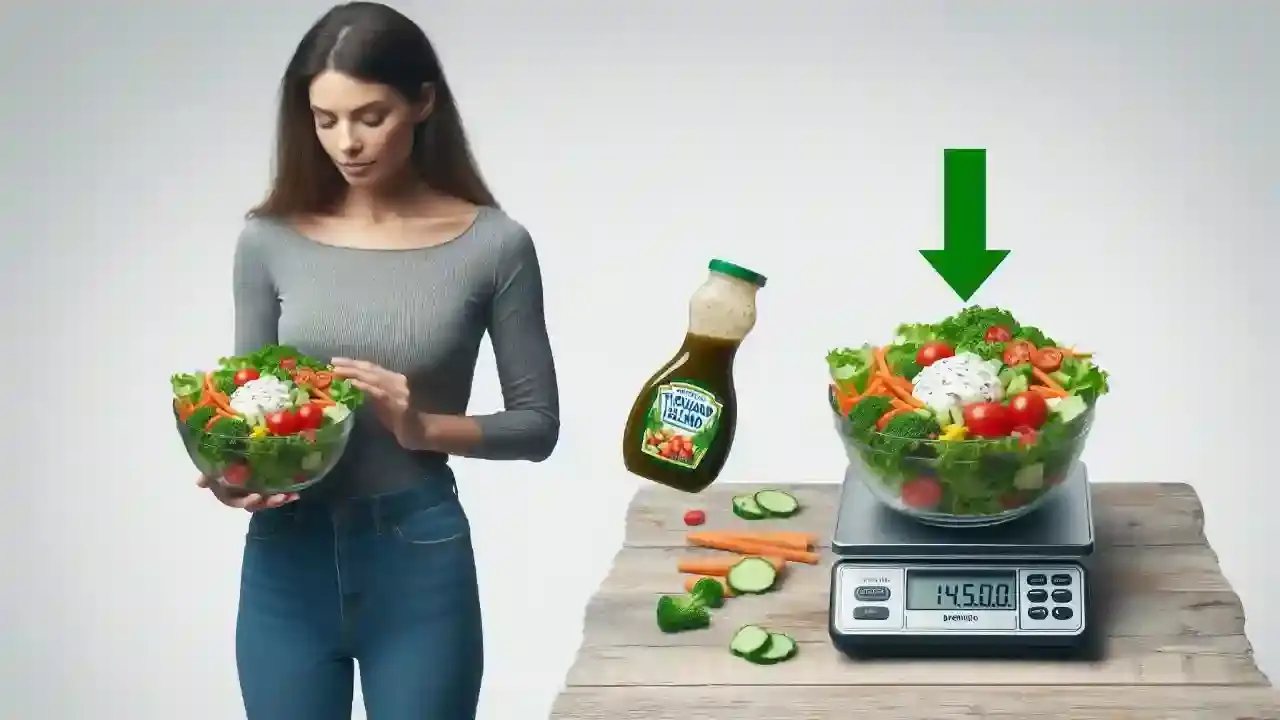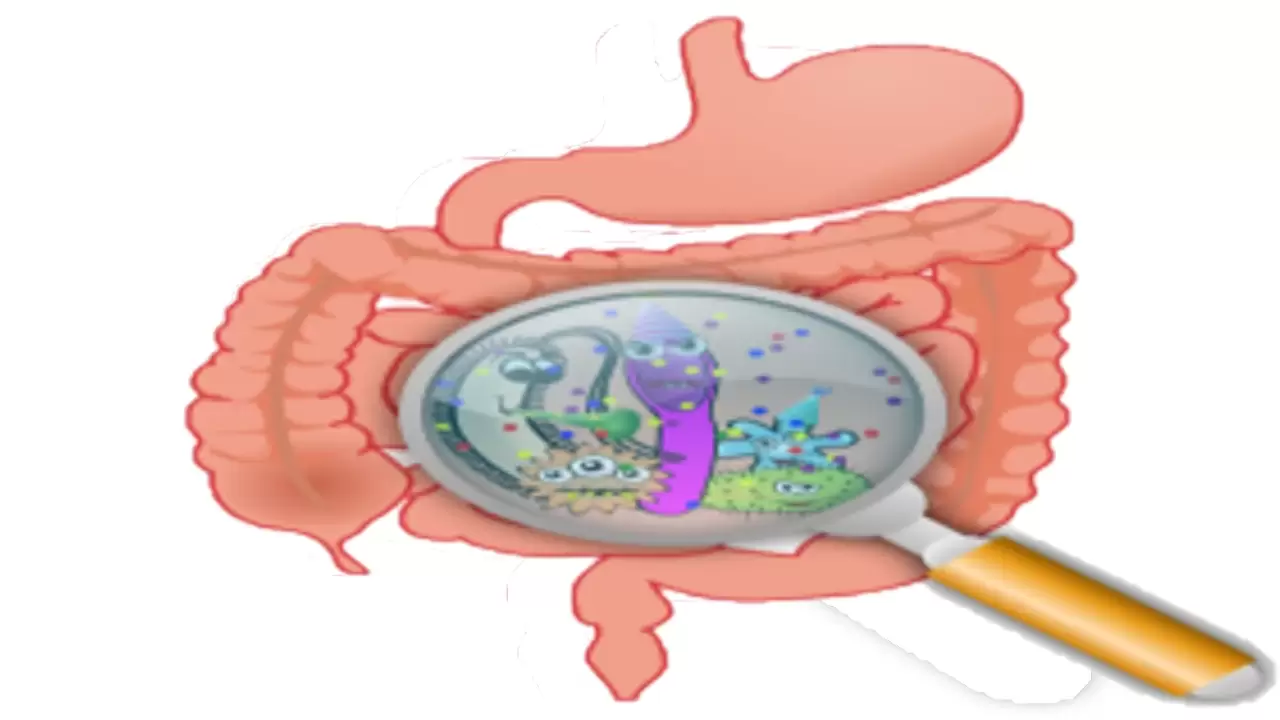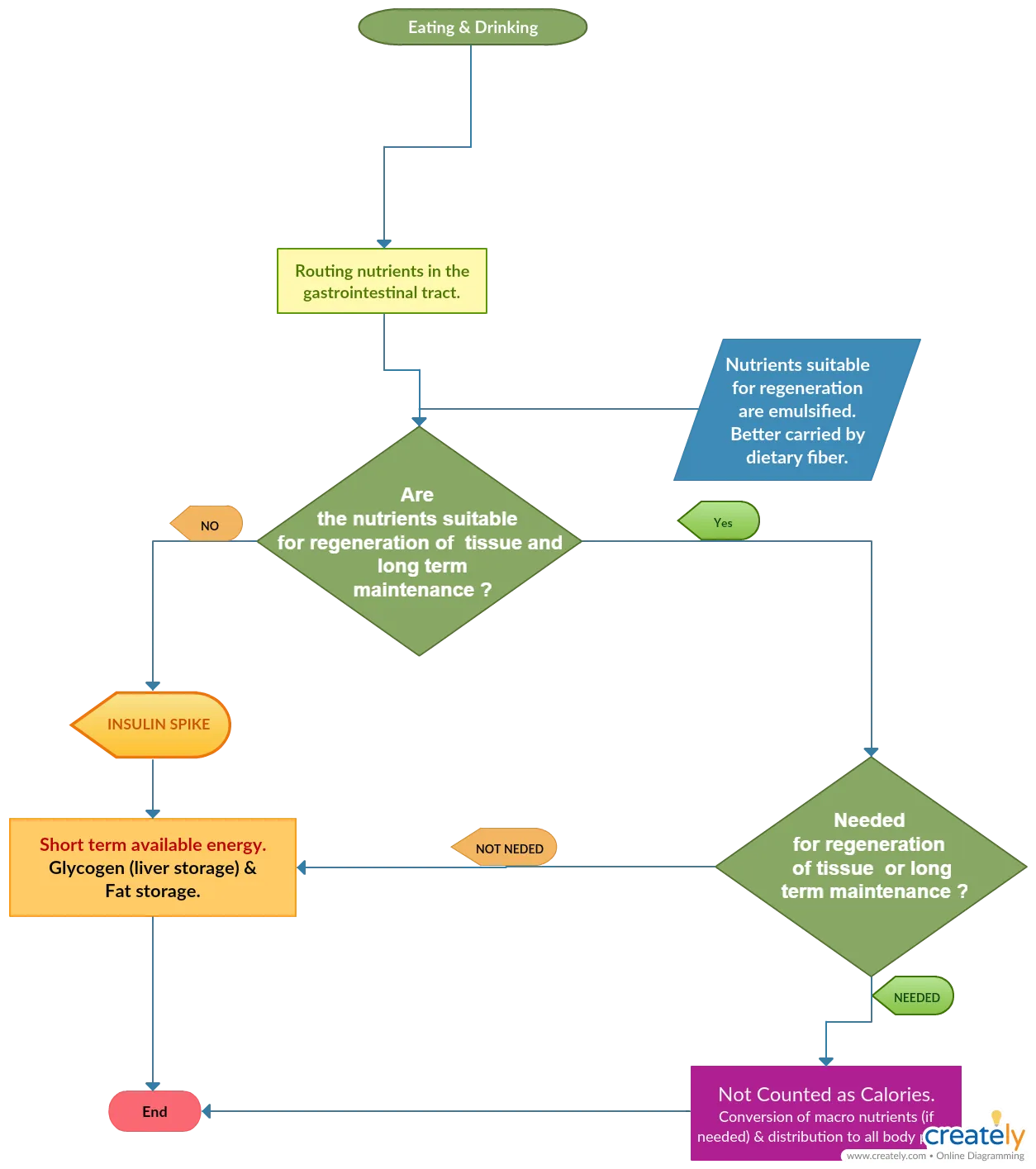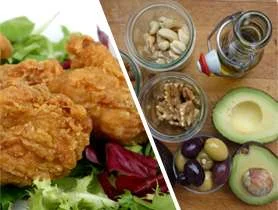
"A calorie is a calorie, no matter where it comes from, " was considered a tautology, but it is wrong!
Calories and nutrients are key resources that the body optimally channels with mathematical efficiency. The caloric calculations are based on a comparison between the calories we consume and those we expend, and the difference between them is the explanation for the weight changes. At the same time, the method does not mimic the way the human body works. The method only gives an estimate and does not explain the principles by which the body performs the optimization. Optimization between nutrients is carried out regularly, and there are significant gaps between women and men. This paper introduces the principles of the method with a relatively simple mathematical model that is not critical to understanding the model. The model explains why not all calories are the same, as experts believed until a few decades ago.
The approach I am presenting will require more complex calculations, some of which are indirect, but will show consistency with the way the body works and explain various phenomena that have been observed in studies but have been partially explained.
Introduction to caloric optimization.
Link: The true-to-reality calculation method of nutritional indices.
Studies point to phenomena that seem inconsistent with a simple consumption-calorie summary. Still, I have not found the whole explanation anywhere, and therefore, I present a consistent new theory that is much simpler than one might think. Energy and matter, as we know, cannot vanish. However, calories are counted differently in different routes and are sometimes perceived as having negative calories. (There is no such situation.)
- The portion of food dedicated to tissue regeneration varies depending on the body's requirements and diet quality and quantity. The rest is converted into energy and fat and influences body weight. Surprisingly! - Processed foods make us gain weight much faster than natural foods, which contain the same calories. Not all calories are equal.
Surprisingly, processed foods make us gain weight much faster than natural foods, which contain the same calories.
- Differences in nutrient breakdown efficiency were found between women and men. After fasting, men digest carbohydrates better than women, who digest fats better. The study found that women's and men's responses to the same calorie count varied between different foods.
- Nutrient optimization suggests that it is advisable to eat the nutrient composition that suits your gender, age, and health status, which means that the caloric calculation is a result of the optimization. Thus, it is clear that not all calories are the same.
Since food routing between the two primary uses (tissue building and maintenance, as opposed to available energy and fat accumulation) is not fixed and differs from person to person, summing the calories in food and beverages is inaccurate.
Better digestion improves the body's ability to absorb nutrients and regenerate tissues, which aids in weight loss.

Optimization means that each food and drink has two digestive routing options.
- To become available energy for immediate exploitation. (Or fat storage.) "Counted as calories."
- It is to be used for building tissues and long-term maintenance. "Not counted as available calories."
The nutrients we eat and the calories they carry cannot disappear, but they can be redirected to other non-energy purposes. The digestive routing process is significant for our overall health and appearance, as well as maintaining our body's optimal weight.
The negative calories idea has a completely different optimization approach.
The idea that negative calories exist is not new. It usually refers to foods that require more calories for digestion than they contain. This way of thinking is inaccurate and does not optimize or mimic the processes in the human body.
- The new trend for slimming by testing intestinal bacteria and adapting foods is based on similar principles of improved absorption of nutrients suitable for tissue regeneration and long-term maintenance. (Without a comprehensive theory to explain how it works).
To illustrate the optimization principle, consider a fresh vegetable salad with vinegar, lemon, and olive oil.
- The oil lubricates the intestinal walls and the dietary fiber in the salad; the intestinal walls are renewed in the presence of probiotic bacteria. The many calories found in oil have not disappeared! (Energy conservation laws do not allow energy and matter to disappear.) But have changed shape and become tissue. The result is that less food is converted into available energy and/or accumulation of fatty tissue. The effect is even more significant because the intestinal walls that allow the absorption of nutrients will enable the liver to synthesize more proteins and fats for tissue renewal in many other places in our body.
- It is enough to create a rerouting of 5% of the food you consume for purposes other than energy so that your body weight will decrease over time, and with it, your health will improve.
Unlike humans, the oil in the vehicle is not counted as energy intended to propel the car.

An intuitive illustration of this model using cars that have a separate oil tank. (Unlike humans)
The ability to redirect food to the "virtual oil tank" that is not counted as calories is significant. The food routed into the oil tank is intended for body maintenance and tissue regeneration; it is not considered energy!
- Food is simultaneously used for body maintenance (engine oil) and energy production. But you can probably change the proportions! (For example, less energy and more maintenance.)
Cars have separate oil tanks designed to lubricate the engine, so we do not consider oil as available energy. The human body has a similar need for natural emulsified oils/fats for maintenance, but there is no separate container; it uses a mechanism of routing the required nutrients, and is suitable for regeneration. Long-term care and tissue regeneration are not utilized as much as the available energy in a vehicle.
The insulin hormone (produced in the pancreas) plays a significant role in routing food and beverages.
The insulin hormone: Link: Insulin (Wikipedia)
- It is considered to be the primary anabolic hormone of the body. It regulates the metabolism of carbohydrates, fats, and proteins. (Wikipedia)
- It regulates the levels of nutrients turned into energy. Higher energy production leaves fewer nutrients for tissue regeneration.
The calorie routing method is based on optimizing the digestive system.
- The digestive system easily absorbs moist, easily digestible food mixed with dietary fiber, oils, and natural fats in the presence of probiotic bacteria. If the digestive system is too acidic, it is prone to the proliferation of pathogens that interfere with food absorption. Strengthening the liver that produces the bile fluid affects the digestive system's absorption.
Macronutrients suitable and needed for regeneration or long-term maintenance processes are not "counted as calories."
- Nutrients are suitable and needed for regeneration, and long-term "maintenance" is emulsified.
- Better carried by dietary fiber. (The absorbance of the emulsified nutrients requires the exact types and amounts of gut bacteria.)
- The remainder goes into producing short-term energy and fat storage.
Everything done to improve food digestion and absorption will help us optimize the absorption of nutrients required for tissue renewal and indirectly help us lose weight faster!
Routing Calories Intake - Flowchart.

The digestive system's "decision-making" process flowchart:
- Are the nutrients ingested suitable for tissue regeneration and long-term maintenance? Appropriate nutrients for regeneration are emulsified. (They are better absorbed with dietary fiber.)
If Yes
- The insulin spike is low if the nutrients contain all the required materials.
If No
- All nutrients are designated as available energy or stored fat; insulin spikes produce a higher feeling of satiety.
- Does the body need these suitable nutrients for regeneration?
If Yes
- If suitable nutrients are needed, they will be absorbed and converted (mainly by the liver into other proteins and fats the body needs and distributed to all organs and systems. (The body "does not count" these calories.)
If No
- Although suitable for building and maintaining tissue, unneeded nutrients will also be turned into available energy or fat (with a lower insulin response).
The mathematical model of nutritional optimization.
Health optimization requires that all of the body's nutrient needs are fully met. Another parallel optimization is that there are no fluctuations in weight. The mathematical solution requires the use of derivatives, and I did not specify how I arrived at the mathematical solution; I only provided the final result. (Some people don't like formulas.)
Introduction.
- Routine caloric calculations and nutritional measures, including various calculators, are based on erroneous assumptions. Calories are not uniform for everyone, and neither are the different measures. (insulin index and glycemic index) The composition of foods, the source of food, whether natural or processed, easy or difficult to digest, and even the hours we eat have meaning.
This model highlights only one central issue of caloric calculations, which is significant for tissue regeneration and human health. The mathematical model is very simple and can also be understood intuitively. It should soon be the basis for more correct calculations.
The basic premise of this model is:
- Only high-quality food that is easy to digest, easily absorbed, and free of toxins, artificial additives, and chemicals can be used by the body for tissue regeneration and maintenance. Therefore, it cannot be argued that caloric weight is the difference between calories consumed and caloric expenditure at rest plus calories in exertion.
- Food unsuitable for tissue registration (industrialized and highly processed) can only be used for energy production and fat storage.
- Reasonable physical exertion (except very intense sports) does not affect the rate of tissue regeneration.
The explanatory variables:
- Total Calorie Intake. (TCI) - Total daily caloric intake (at a given time t)
- α - The proportion of food (in caloric terms) that corresponds to tissue regeneration. (at a given time t)
- Explanatory variables:
- In emulsification, natural, varied, organic, additive-free, easily digestible, and absorbable food raises the alpha index. (Index subject to immediate dietary change)
- Basal Metabolic Rate. (BMR) - The amount of daily energy the body consumes at rest.
- Activities Metabolic Rate. (AMR) The amount of daily energy that the body consumes through physical exertion.
- β - The weighted proportion (in caloric terms) of the total resting energy the body can harness for tissue renewal and maintenance.
- Explanatory variables:
- In adulthood, the beta coefficient decreases. Cellular damage is heavier, but the liver's synthesis abilities diminish.
- Women will likely find a higher beta than men (when all other conditions are the same).
- Detoxification, particularly mechanical, raises the beta coefficient for a certain period. (Improves tissue renewal ability)
- On a prolonged diet, the beta increases at first and gradually decreases, making it difficult to continue weight loss.
Sources and uses of optimal food routing
|
Category |
Nutrition is suitable and routed to tissue regeneration. (Calories uncounted) |
Nutrition is routed to energy production and fat accumulation. (Calories counted) |
Notes: |
|
Sources The food and beverages we consume |
α xTCI Food and beverages are suitable for tissue regeneration. (Quality and variety of food and beverage) |
(1- α) xTCI Complementary to 100% - the portion of food and beverages that can only be used for energy production and fat accumulation.An alpha |
A value equal to or approaching 1 is an optimal state of healthy food. |
|
Uses The Body's Uses of Nutrients |
β x BMR The body's need (at rest) for tissue regeneration. (Age, Gender, Health) |
(1- β) x BMR + AMR Complementary to 100% - including the energy requirement of exercise.
|
Fluctuations in the beta coefficient are relatively slow and are mainly age-related. (Significant difference between women and men) |
|
Because of the asymmetry, it is incorrect to subtract the uses from the sources simply as nutrition does. |
|||
The result of the mathematical model.
α xTCI ≥ β x BMR ; α ≥ (BMR/TCI)x β
A verbal explanation of the mathematical model result.
- The alpha coefficient must be greater than or equal to the resting calorie rate out of the total daily intake, multiplied by the beta coefficient. Optimization requires that all of the body's tissue regeneration needs are fully met with high-quality nutrients suitable for tissue regeneration.
The model's results, summary, and conclusions.
- A high alpha coefficient means a particularly healthy diet. Although low, it causes morbidity and obesity. (The Plague of the 21st Century)
- A healthy diet, adapted to tissue renewal, is more effective at maintaining weight than the same calories of industrialized food that is not adapted for tissue regeneration. (far-reaching conclusion)
- The healthier food we eat, the less fattening it is! (With the same calories as industrialized food)
- Industrialized and highly processed foods are both fattening and harmful to health.
- The beta coefficient is enormously significant for health, chronic morbidity, and life expectancy. At the same time, it is not subject to severe fluctuations, such as our control over nutrition. A healthy lifestyle (including mental), exercise, and detoxification, especially mechanical, can increase the body's tissue renewal capabilities.
Optimizing the caloric model has far-reaching implications.
Findings that support my hypothesis.
I noticed that food intake does not explain my frequent weight changes. As a liver cirrhosis patient, my tissue damage was massive.
- When I started to inquire how that could be possible, all my research pointed out that caloric intake is more than just adding up numbers. Amazingly, no one has suggested another theory.
- The Wake Forest research cited above shows that monkeys are fed different fat types, but the same calories have different weight-gain outcomes. So, it should be clear that the dictum "a calorie is a calorie" is wrong.
- The Harvard University Research cited above comes to the same conclusion—again, without proposing an alternative theory.
- Studies indicate that trans-fats raise insulin levels much higher than natural fats. The same effect occurs with artificial fructose. (Found in soft drinks)
- Many specialists consider the insulin hormone (secreted by the pancreas) one of the main reasons our body triggers fat storage.
- When eating moist starch (like rice) with small quantities of natural fat (like olive oil or Ghee), the insulin response is much lower than eating rice separately.
A short background and essential findings support this theory.
Basal metabolic rate (BMR) is the rate of energy expenditure per unit of time at rest.
Links: Basal Metabolic Rate. (BMR) | A calorie is a calorie" (Wikipedia)
- "A calorie is a calorie" is a tautology that conveys that the "calorie" concept is sufficient to describe a food's energy content. The phrase means that regardless of a food's calorie form (carbohydrate, protein, or fat), its energetic value is identical.
The Trans-fat diet monkeys research. (Wikipedia)
- In 2007, Wake Forest University researchers published a report on a six-year longitudinal study. They fed two groups of monkeys the same number of calories and the exact amounts of dietary fat, the only difference being that one group was provided foods higher in trans-fat. The high trans-fat subjects gained 30% more belly fat than the low trans-fat subjects. The researchers concluded that the type of calories consumed does affect body weight.
Harvard University Research (Wikipedia)
- In 2011, a group of Harvard University researchers published a study in the New England Journal of Medicine that followed 120,877 highly educated men and women for 12 to 20 years. "The study's lead author concluded in an interview that trying to count calories and lose weight would be futile unless one is examining the kinds of calories consumed.
The findings above suggest that the tautology "A calorie is a calorie" is incorrect.
Current methods of computing food and beverage calorie intake are inaccurate.
Link: A more precise calculation method of nutritional indices.
Calculation errors in the existing method accumulate. They are not eliminated with reverse deviations over time.
- You must subtract all the nutrients not utilized for energy consumption or divide the BMR (Basal Metabolic Rate) into the two main categories mentioned above.
- Not all calories are equal. The "calorie is a calorie" tautology is wrong.
Calculating the caloric intake of food more accurately is possible through simulations.
- Basal metabolic rate (BMR) should be divided into two major processes ("Long-term maintenance" and energy and fat) and should not be regarded as one. If this methodology is employed, I believe better estimates of caloric intake will be made.
- It might also better explain the significant variance in BMR found in studies. The claim that variation is due to fat-free body mass might be erroneous, as fat tissue does not need regeneration.
Energy conservation laws do not allow energy to be lost. Basal Metabolic Rate (BMR) should be split into its two primary components (Per time unit)
- Available and immediate energy + accumulated fat.
- Energy is directed toward tissue regeneration and long-term maintenance.
Surprisingly! Processed foods make us gain weight much faster than the same calories from natural foods.

Quantitative illustration of caloric routing. (Simple, realistic example.)
The example is accurate for those whose diets are based on processed and industrialized foods. (large parts of the population)
Suppose a woman eats, in both cases, the same 2,000 calories a day, only in a completely different composition:
- A varied menu containing only natural, organic food.
- Only industrialized and highly processed food and beverages are available.
Industrialized and processed foods are often unsuitable for tissue regeneration and energy production.
- In this example, industrialized foods generate more calories (5% of daily intake than natural and non-processed foods, as fewer nutrients are routed to tissue regeneration.
The 100-calorie gap (5 percent of 2000 calories a day) can accumulate as excess fat (equivalent to 12.5 grams of fat a day, or about 375 grams a month and 4.5 kilograms a year!), with a much faster aging process. (Due to slow tissue regeneration.)
A research proposal examining the tautology "Calorie is a calorie - no matter where it comes from"?
The experiment I propose is not complicated or expensive, but the food industry is not interested in research that could harm it. Many regulatory bodies have the resources and ability to conduct such research.
- Sample pairs of identical twins (women and men) of the same height and weight (age is necessarily the same), and ensure they perform similar activities in the laboratory. The pairs of twins to be sampled will receive different foods; some will receive highly industrialized and processed foods, and some will receive natural foods with identical caloric values.
- Similar studies in identical twins have already been carried out in a slightly different context, and the indirect conclusions are that calories are indeed not the same for everyone. Still, since this was not the subject of the study, the conclusions were not perceived as conclusive.
Accurate weighing over time can confirm or negate the proposed model.
The implementation of the "Routing of calorie intake" idea.
Avoid thinking about the existing calorie calculations! Foods that are easy to digest, dipped in oil, and moist are easier to digest, healthier, and help maintain a healthy weight.
Here are a few helpful recommendations for a healthy diet:
- Eat only natural, moist foods and beverages. (Preferably organic and not genetically modified.)
- Eat plenty of moist dietary fiber with fermented products (such as goat yogurt). It will improve the absorption of nutrients through the intestinal walls.
- Consuming a large variety of food and beverages. (It increases the chances that these nutrients are needed for regeneration.)
- Adding suitable natural emulsifiers or small quantities of natural oils and fats. Like olive oil, Ghee butter, avocado, and homemade natural sauces. (All-natural sauces are suitable emulsifiers.)
- Lemon, vinegar, olive oil, Ghee, mustard, honey, avocado, and egg yolk are excellent emulsifiers mixed with oils/fats. No wonder sauces are made of them!
- Reduce the consumption of acidic foods for the intestines, especially meat, poultry, and cheeses. It is especially essential not to combine them with starches.
- Strengthening of the liver and improving the amount of production of bile:
- Regular drinking of natural juices (not too sweet)
- Regular drinking (preferably daily on an empty stomach) of apple cider vinegar with lemon juice and olive oil.
- Periodic detoxification of the liver and kidneys.
- Eating habits are of great importance. Eat leisurely, chew well, and don't eat heavy meals at night.
Summary, conclusions, and recommendations.
"A calorie is a calorie, no matter where it comes from" was considered a tautology, but it is wrong! Calories and nutrients are key resources that the body optimally channels with mathematical efficiency. The suggested caloric and nutrient optimization model mimics how the body works and is, therefore, more precise than existing methods of caloric summation.
Every food and beverage has two options for routing within the digestive system.
- To become available energy for immediate exploitation. (Or fat storage.)
- It is to be used for building tissues and long-term maintenance.
The nutrients we eat and the calories they carry cannot disappear, but they can be redirected to other non-energy purposes. This routing process is tremendously significant for our overall health, appearance, and optimal body weight.
Calculating the caloric intake of food more accurately is possible through simulations.
- It would be incorrect to sum up calories as they exist today. Calculating (indirectly) the efficiency of estimates will be necessary, and it will give much more reliable figures than the existing methods.
Implementing the "Routing of calorie intake" idea is based on optimizing digestion and nutrient absorption. Optimizing digestion requires natural, easy-to-digest food. Processed and industrialized food is harmful; it is fattening and harmful to our health.
Testing the seeming tautology, "Calorie is a calorie - no matter where it comes from, it is essential. (Methodology proposed) All existing methods of caloric calculations are inaccurate. It is desirable to apply a method consistent with the processes performed by the human body.

To illustrate the principle, let's take, for example, a fresh vegetable salad with vinegar, lemon, and lots of olive oil. The oil lubricates the intestinal walls and the dietary fiber in the salad; in the presence of probiotic bacteria, the intestinal walls are renewed. The many calories found in oil have not disappeared! (The laws of energy conservation do not allow energy and matter to disappear) but have changed shape and become tissue. The result is that less food is converted into available energy and/or accumulation of fatty tissue. The effect is even more significant because the intestinal walls that allow good absorption of nutrients will enable the liver to synthesize more proteins and fats for tissue renewal in many other places in our body.

